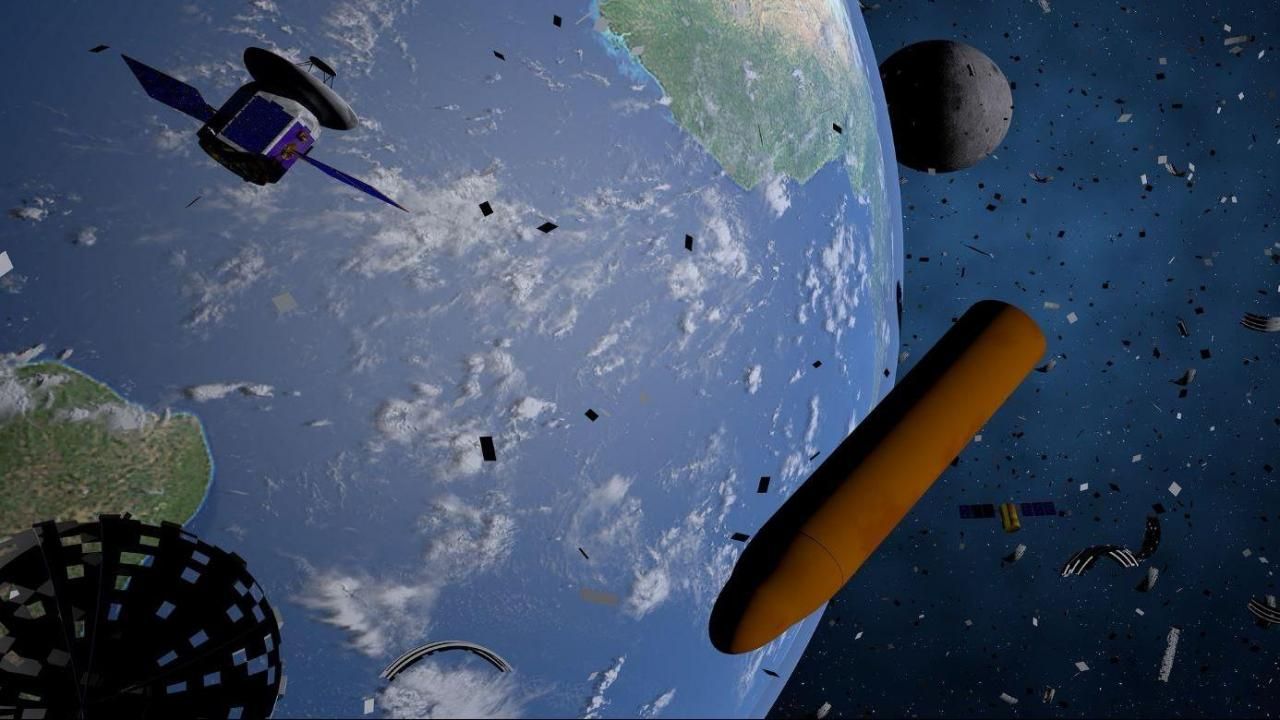Space junk: New rules speed cleanup of orbital debris

The Federal Communications Commission (FCC) unanimously voted last week to adopt new rules limiting when defunct satellites must de-orbit from 25 to 5 years.
The new standard requires spacecraft in low Earth orbit, altitudes below 2,000 km (about 1250 miles), to be disposed of by re-entering the atmosphere "as soon as practicable" and no more than five years after their end of mission.
The FCC manages access to the spectrum and maintained rules regarding orbital debris which apply to U.S.-licensed satellites as well as others seeking U.S. market access.
The U.S. House Science Committee expressed concern about the new rule in a letter to FCC chair Jessica Rosenworcel. Committee leaders recognized the "seriousness of the orbital debris threat to future space sustainability" but questioned the FCC's authority to establish such rules.
"We are concerned that the Commission’s proposal to promulgate rules on this matter could create uncertainty and potentially conflicting guidance,” the letter adds.
The Senate Committee on Commerce, Science and Transportation is also involved in the space junk problem, introducing the Orbital Sustainability (ORBITS) Act in mid September. The bill seeks to fund NASA to develop technologies to actively remove orbital debris.
Crowded low Earth orbit
As of October 2, the U.S. Space Command reports tracking 11,779 payloads in low Earth orbit. Over a quarter of those are Starlink, One Web, or other satellites providing internet and other communications services, and that number continues to grow.
But launch providers have also significantly reduced the time dead satellites and other debris remain in orbit.
"There is no reason to wait that long anymore, especially in low Earth orbit,” said Rosenworcel.

Looking across all launches by all countries, rocket bodies (mostly upper stages which push satellites into the desired orbit) launched in 2000 spent nearly 2.5 years in orbit before burning up in the atmosphere. This was reduced by a year in 2010. So far in 2022, rocket bodies are averaging about a week before naturally removing themselves from the orbital debris problem.
Disposal of satellites as they reach their end of life as well as other debris created during deployment is a far larger problem, but time to de-orbit has also accelerated. Debris from 1993s launches required nearly 20 years on average to de-orbit. This was reduced to 6.3 years by 2000 and 3.9 by 2010.
But these improvements have been more than offset by major incidents which instantly added thousands of bits of debris.
- 3,500 pieces of debris were created in 2007 when China conducted an anti-satellite test, targeting their Fengyun-1C weather satellite which had been launched in 1999. Over 80% of the debris remains in orbit 15 years later.
Cosmos 2251, a defunct Russian military satellite which had been out of service since 1995, collided with an operational communication satellite (Iridium 33) in 2009, producing more than 2,300 pieces of small pieces, 42% remains in orbit today.
A November 2021 Russian anti-satellite test destroyed their Cosmos 1408 surveillance satellite, producing 1,800 pieces of trackable debris and many more too small to track but still a threat to other spacecraft. Tracking indicates that about one-third of the debris remains.










